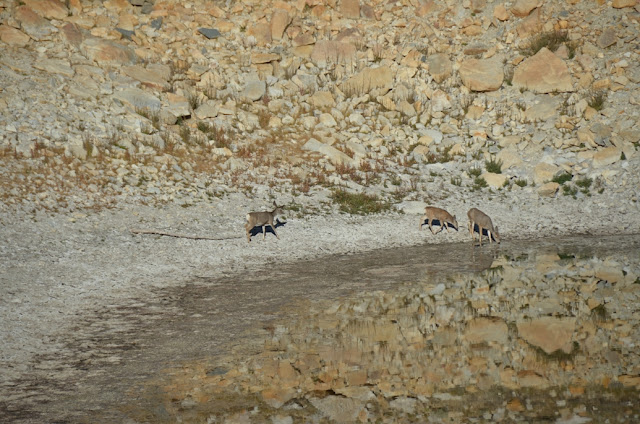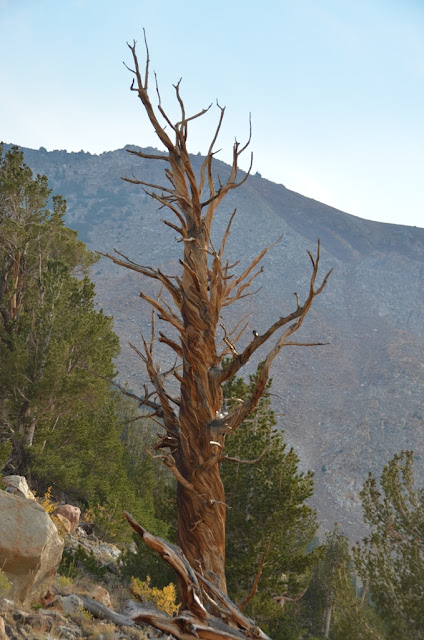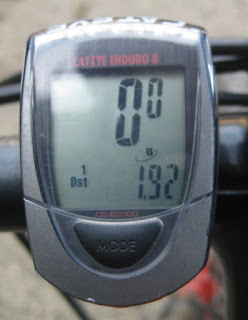I drove in from Bishop and the initial switchbacks provide quite an experience with steep drop-offs to the side and some mildly challenging poor traction areas. I would not want to attempt this route with or without my trailer if the trail was wet or icy. Otherwise a good 4WD with low gears, decent ground clearance and appropriate tires will do fine.
The time of year can make quite a difference in what you may see. Because of the presence of Aspens you might have a chance to see some nice color amidst the stands of pine. In the distance you can see the Palisades Glacier. All of the forest fires made the air too hazy for good shots of the Sierras.
Many of the lakes receive water from either rain or snow melt so the prolonged drought has forced many of them to dry up. In fact, Rocky bottom Lake clearly does have a base that is well matched to its moniker. In this picture it is far below me and decidedly bone dry.
Despite the low water level Funnel Lake still offered great reflections on the still surface.
It was also a great view of Funnel Lake from the camp site that I chose.
A telephoto shot of camp from the cliff above the lake
Sunsets were never a disappointment!
Every morning and evening some deer would come down to the lake to slake their thirst and nibble on small bits of vegetation.
The lake's reflection of the rocky shores made it hard to tell if the deer were really drinking water
Near the tree line some of the older trees offer quite a tortured exterior that reflects the weather that both nurtures and possibly destroys them
This forlorn tree trunk reminded me of a headless Greek statue with one arm raised in greeting.
This is an area worth visiting for four or more days. I used one day to drive on the truck trails over to Baker Creek and then enjoyed a leisurely hike up to the Baker Lake
In the main area of Coyote Flat there was once a small military airfield:
http://www.airfields-freeman.com/CA/Airfields_CA_Fresno_N.htm#coyoteflats
At 9988’ above sea level, Coyote Flat was the highest airfield in North America until its recent de-comissioning and is one of the few military installations to have been based in the Owens Valley and immediate surroundings. In the 1960s, the Air Force Flight Center, Edwards Air Force base (AFFTC) took over 642 acres of Coyote Flat as a test site. The official explanation is that the Department of Defense used the landing strip to test the high altitude performance of helicopters and airplanes. More conspiracy minded individuals point out that AFFTC also ran Area 51 and that the inaccessibility of Coyote Flat kept operations far from prying eyes. In the last few years, control of the area was ceded back to the Forest Service which removed the three buildings, dug up the pavement, and surrounded the site with barbed wire in order to return the site to its natural condition. The Forest Service insists that the large “X” is meant to discourage landings. Even so, back country flying enthusiasts have found it possible to land on the airstrip without undo trouble.
I appreciate your visit to my blog! I hope that these write ups of mine will inspire you to seek out your own adventures. Fare well until we next meet.

























































